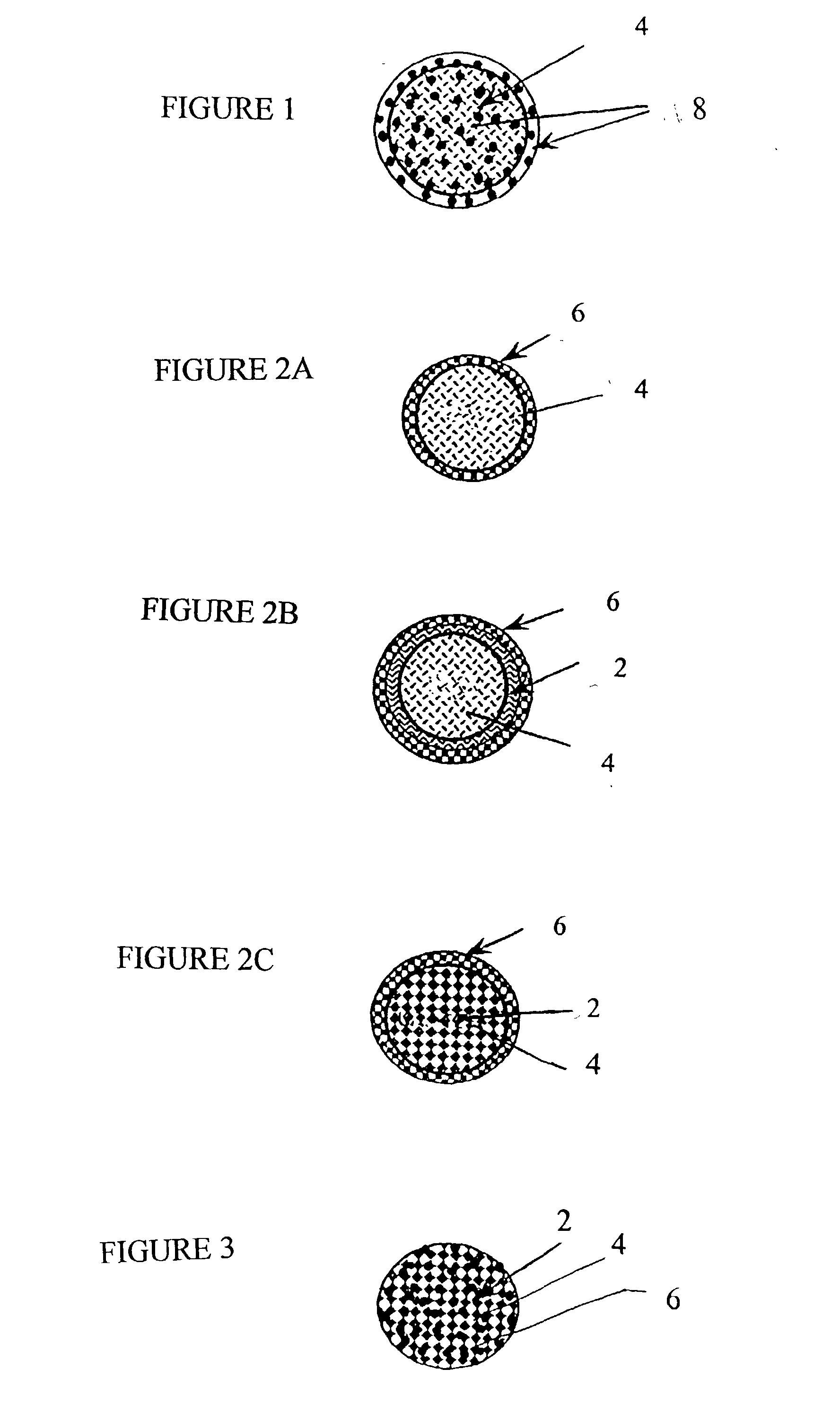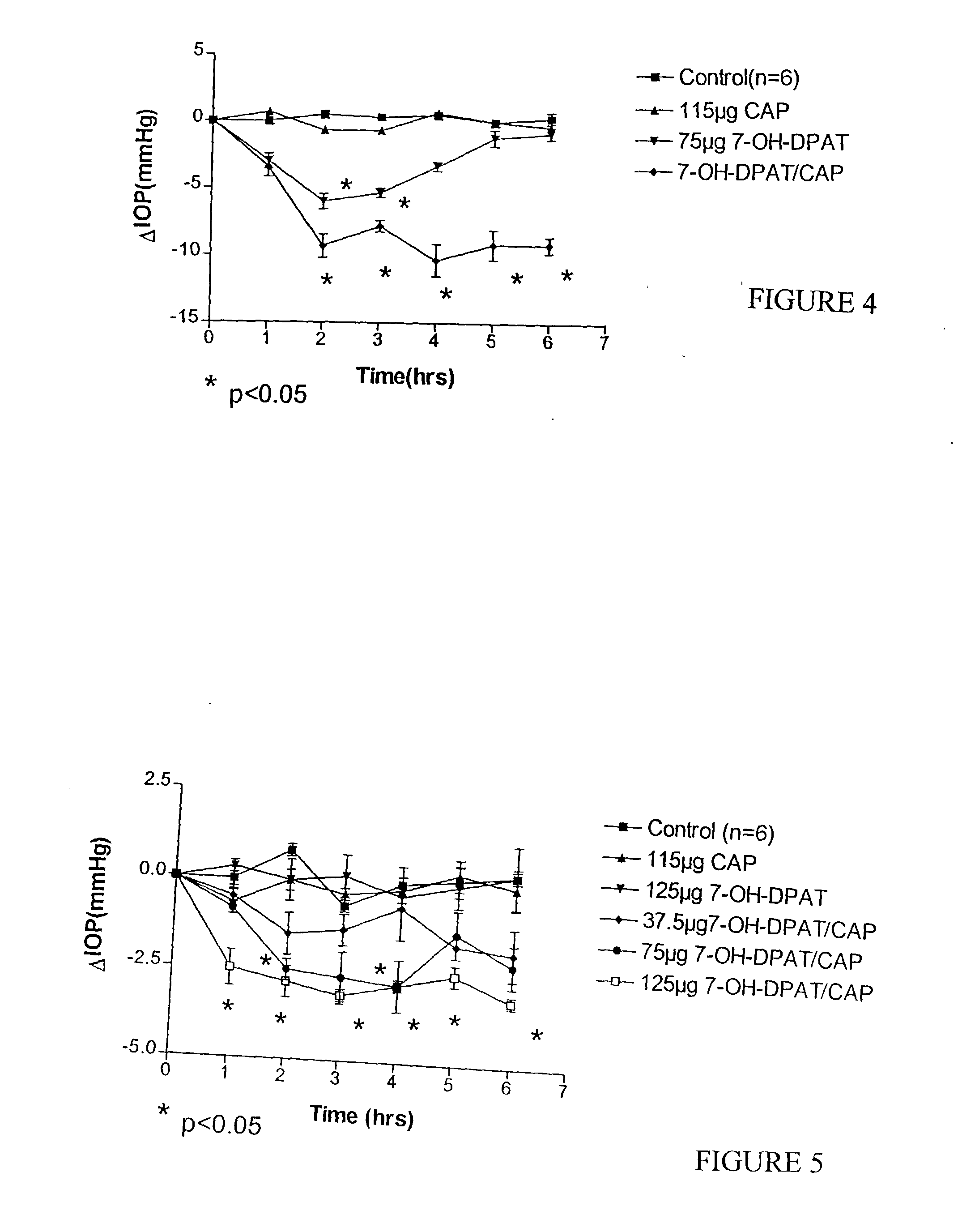Intraocular delivery compositions and methods
a composition and composition technology, applied in the direction of biocide, antibody medical ingredients, peptide/protein ingredients, etc., can solve the problems of unfavorable treatment effect, increased risk of age-related eye diseases in americans, and difficulty in delivering therapeutic agents into the eye at therapeutically effective concentrations,
- Summary
- Abstract
- Description
- Claims
- Application Information
AI Technical Summary
Problems solved by technology
Method used
Image
Examples
example 1
[0069] 12.5 mM calcium chloride, 12.5 mM dibasic sodium phosphate and 15.6 mM sodium citrate were mixed together in water and stirred for 48 hours. After the reaction was completed, the suspension of CAP particles was sonicated with 550 Sonic Dismembrator (Fisher Scientific, Pittsburgh, Pa.) for 30 minutes and stored at room temperature. Nanoparticles were characterized by particle size utilizing a Laser Defractometer (Coulter.RTM. N4Plus). The size of particles ranged from 70 to 1075 nm with the majority of the particles in 701 nm and in 196 nm. The pH of the solution containing particles was 6.8 determined by a pH meter (Model AP15, Fisher Scientific, Pittsburgh, Pa.). Scanning electron microscopy also demonstrated the surface morphology. CAP was concentrated to 3 mg / ml by centrifugation at 7,000g for 15 minutes. To formulate the drug solutions, CAP were loaded with different doses of 7-OH-DPAT. 7-OH-DPAT was dissolved in 0.5 ml cellobiose solution (the concentrate of stock soluti...
example 2
[0070] Previous studies reported that 7-OH-DPAT, a dopamine D.sub.2 / D.sub.3 receptor agonist, produced dose-related IOP lowering effects in New Zealand White (NZW) rabbits. A comparative study was conducted in which the medium dose (75 .mu.g) of 7-OH-DPAT was combined with CAP and administered to NZW rabbits. The results of the experiment are shown in FIG. 4. The results indicate that rabbits treated with CAP combined with 7-OH- DPAT exhibit lower intraocular pressure over time as compared to rabbits that either remained untreated or that were treated with CAP alone or with 7-OH-DPAT alone.
[0071] The particles that were used in this specific experiment were prepared as discussed in Example 1, but it should be understood that any of the methods described herein could be used to prepare effective particles. To test the efficacy of the particles, an effective amount of the 7-OH-DPAT in vehicle with CAP was delivered intraocularly to the eyes of rabbits and the eye pressure was checked....
example 3
[0072] A study was conducted to investigate the efficacies of dose-related 7-OH-DPAT with CAP compared with 7-OH-DPAT alone on Dutch Belted (DB) pigmented rabbits.
[0073] The results of the experiment are shown in FIG. 5. Generally, pigmented rabbits treated with greater doses of 7-OH-DPAT combined with CAP exhibited lower intraocular pressure over time as compared to rabbits that either remained untreated or that were treated with CAP alone, with 7-OH-DPAT alone, or with lower dosages of 7-OH-DPAT with CAP.
[0074] The particles that were used in this specific experiment were prepared as discussed in Example 1, but it should be understood that any of the methods described herein could be used to prepare effective particles.
[0075] The addition of CAP caused a dose-proportional reduction in IOP that was pronounced and sustained, while 7-OH- DPAT alone had no effect
PUM
| Property | Measurement | Unit |
|---|---|---|
| size | aaaaa | aaaaa |
| diameter | aaaaa | aaaaa |
| particle size | aaaaa | aaaaa |
Abstract
Description
Claims
Application Information
 Login to View More
Login to View More - R&D
- Intellectual Property
- Life Sciences
- Materials
- Tech Scout
- Unparalleled Data Quality
- Higher Quality Content
- 60% Fewer Hallucinations
Browse by: Latest US Patents, China's latest patents, Technical Efficacy Thesaurus, Application Domain, Technology Topic, Popular Technical Reports.
© 2025 PatSnap. All rights reserved.Legal|Privacy policy|Modern Slavery Act Transparency Statement|Sitemap|About US| Contact US: help@patsnap.com



